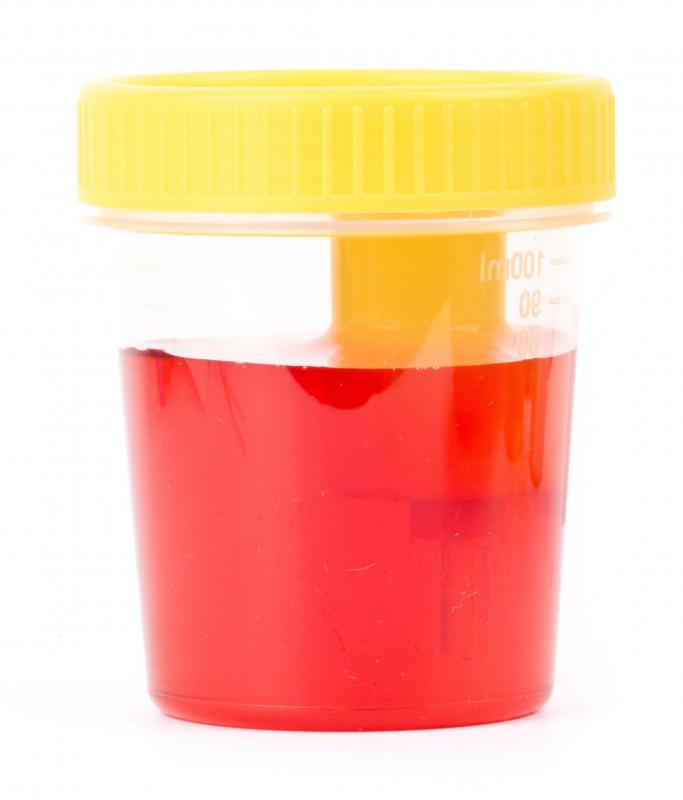At WiseGEEK, we're committed to delivering accurate, trustworthy information. Our expert-authored content is rigorously fact-checked and sourced from credible authorities. Discover how we uphold the highest standards in providing you with reliable knowledge.
What is a Shiga Toxin?
Shiga toxin is an extremely dangerous bacterial toxin that attacks the lining of blood vessels. People are most commonly exposed to this toxin as a result of becoming infected with foodborne bacterial illness. Treatment for people with this toxin in their bodies relies on providing supportive therapy to help the body recover while also eliminating the bacteria so they cannot continue to produce the toxin. This usually requires hospitalization for the patient.
Escherichia coli and Shigella dysenteriae are two common sources of shiga toxin. This toxin is a protein produced by the bacteria as part of natural metabolic processes. Since people usually become infected with the bacteria as a result of eating contaminated food and water, the first signs of shiga toxin exposure are often gastrointestinal in nature. Humans and some other animals have receptors on the lining of their blood vessels that make them vulnerable to this toxin, while other animals are immune because there are no receptors for the toxin to lock on to.

Bloody stool, vomiting, and extreme abdominal pain can occur, along with bloody urine in some patients. Patients can develop dysentery, hemolytic urine syndrome, and hemorrhagic colitis. They rapidly lose fluids and this contributes to the development of complications like impaired kidney function and changes in blood pressure. Sometimes shiga toxin enters the lungs and damages their lining, and patients eventually develop shock, fall into a coma, and die without treatment.

In patients who experience diarrhea and vomiting, one of the first line treatments is supplemental fluids to keep the patient hydrated. This can help address shiga toxin in the body. More specific treatments can include antibiotics to kill the bacteria and monitoring of kidney health for early signs of kidney damage. Patients infected with these bacteria usually need to be hospitalized for severe symptoms.

Harmful bacteria can be found in a wide range of foods. If people come to the hospital with signs of severe foodborne illness, doctors will want as much information as possible about what patients ate, where, and when. If multiple cases of food poisoning come in, this information can be helpful for identifying the start of an epidemic and recalling contaminated food products quickly, before the epidemic has a chance to spread. People can reduce their risks of developing foodborne illness by washing their hands thoroughly before food preparation, following commonsense food safety precautions, and paying attention to food recalls so they can discard contaminated foods.
AS FEATURED ON:
AS FEATURED ON:

















Discuss this Article
Post your comments